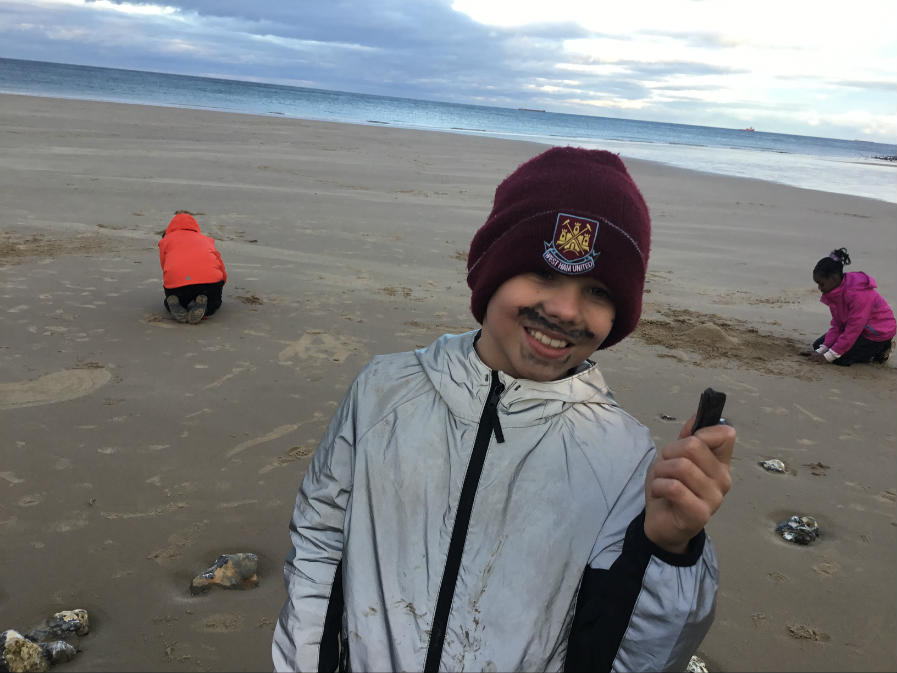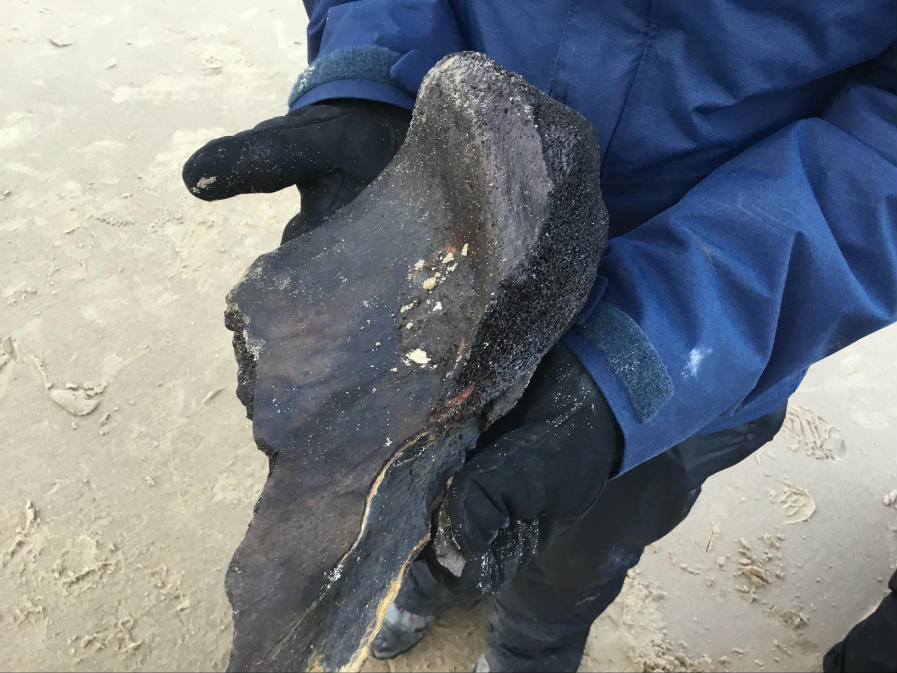The Meads Mammoth
During our stay at Aylmerton, the adults and children were part of some amazing finds on the beach: woolly mammoth bones! While hunting for fossils and other types of rocks on West Runton beach, some mysterious objects were found. The first of these – found by Ms Jenkins – turned out to be the tooth of a mammoth. Excited by the discovery, we all busily continued searching around for other ancient artifacts. Fortunately, it wasn’t too long until another strange object was found. After some discussion and verification with the group leader, Sparky, this turned out to be a scapula (the shoulder bone) of one of these magnificent, long-extinct creatures.
It turns out that the Forest Bed, which is located at the foot of the cliffs, is rich in fossils. The mammal remains from this bed can be anything from beavers to vole and even elephants, deer and hippopotamus.
As it was after high tide, this was a good time to collect fossils. Fossils are exposed on the Forest Bed surface, which can easily be seen and collected from. After a very high tide and during scouring conditions, mammal remains can be found. And it turns out that West Runton beach is most famous for an elephant or steppe mammoth, Mammuthus trogontherii, which was discovered in 1990 and is one of the oldest and best preserved fossil elephants ever found in the UK.
The bone is set to be held for display at the Aylmerton Field Centre to show some of the wonderful things that can be found if the conditions are right at the beach. Here are some pictures of our discovery.













